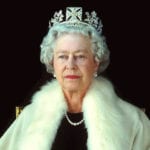 Mysteries
Mysteries  Mysteries
Mysteries  Creepy
Creepy 10 Scary Tales from the Middle Ages That’ll Keep You up at Night
 Humans
Humans 10 One-of-a-kind People the World Said Goodbye to in July 2024
 Movies and TV
Movies and TV 10 Holiday Movies Released at Odd Times of the Year
 Politics
Politics 10 Countries Where Religion and Politics Are Inseparable
 Weird Stuff
Weird Stuff 10 Freaky Times When Famous Body Parts Were Stolen
 Miscellaneous
Miscellaneous 10 Interesting Things Manufacturers Stopped Making and Why
 Gaming
Gaming 10 Funny Tutorials in Games
 History
History 10 Fascinating Little-Known Events in Mexican History
 Facts
Facts 10 Things You May Not Know about the Statue of Liberty
 Mysteries
Mysteries 10 Devastating Missing Child Cases That Remain Unsolved
 Creepy
Creepy 10 Scary Tales from the Middle Ages That’ll Keep You up at Night
 Humans
Humans 10 One-of-a-kind People the World Said Goodbye to in July 2024
Who's Behind Listverse?

Jamie Frater
Head Editor
Jamie founded Listverse due to an insatiable desire to share fascinating, obscure, and bizarre facts. He has been a guest speaker on numerous national radio and television stations and is a five time published author.
More About Us Movies and TV
Movies and TV 10 Holiday Movies Released at Odd Times of the Year
 Politics
Politics 10 Countries Where Religion and Politics Are Inseparable
 Weird Stuff
Weird Stuff 10 Freaky Times When Famous Body Parts Were Stolen
 Miscellaneous
Miscellaneous 10 Interesting Things Manufacturers Stopped Making and Why
 Gaming
Gaming 10 Funny Tutorials in Games
 History
History 10 Fascinating Little-Known Events in Mexican History
 Facts
Facts 10 Things You May Not Know about the Statue of Liberty
10 Failed Sports Leagues That Changed The Game
As we all learned through high school dating, it takes a tremendous amount of failure to learn anything worthwhile. The same lesson applies to modern sports. Sports would not be where they are today without the mind-boggling failures of many other leagues. These upstart leagues made the same mistakes over and over again, all while leaving behind important touchstones which still resonate in modern sports.
10Coloured Hockey League

The National Hockey League (NHL) fielded its first black player in 1958 when Willie O’Ree signed with the Boston Bruins. Eight years earlier, a player named Art Dorrington signed with the New York Rangers in 1950, but he never played in the NHL. This was nearly five decades after the formation of the Coloured Hockey League (CHL), which was Canadian as the spelling shows. Founded in 1895, the CHL featured only black players along with an incredibly modern style of play.
Hockey at the turn of the 20th century was a stale, low-scoring affair, lacking in both speed and agility. And slap shots. There were no slap shots before the CHL. Eddie Martin, a CHL player, is believed to have invented the slap shot decades before it was introduced into the NHL.
The CHL was also innovative in how goalies were used on the ice. Previously, goalies never left the crease, and played the entire game standing up. CHL goalies changed this by chasing pucks out of the crease and dropping to their knees to stop pucks. The goalies quickly became the team leaders in the CHL, a role they still hold today. These CHL tactics were quickly co-opted by neighboring white leagues, who were, of course, averse to giving credit to the black players.
The CHL toiled as a moderately successful regional league in eastern Canada until World War I robbed it of many of its best players, and the league folded in 1925.
9Federal League
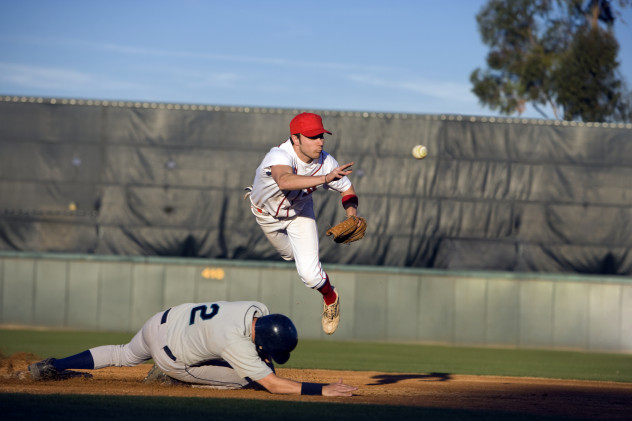
Only once in Major League Baseball’s history has anyone attempted to challenge “America’s Game.” Naturally, the attempt ended in dismal failure, but it led to some interesting footnotes which still reverberate in modern baseball.
In 1913, the Federal League (FL) enacted its plan to become the “third” professional baseball league—after the American League (AL) and National League (NL)—in 1913. The FL offered players exponentially higher salaries than the other major leagues, and started franchises in major baseball markets to compete directly with already established franchises.
The plan was unsustainable since the FL could never hope to make enough money to pay the players in already saturated markets. It didn’t help that many FL teams lacked official nicknames and instead went by “Brooklyn Feds,” “Kansas City Feds,” etc. These factors caused the Federal League to disband in 1915, but not before suing the AL and NL for being “illegal monopolies.”
This case was decided by the Supreme Court in 1922 in Federal Baseball Club v. National League in favor of Major League Baseball. The Supreme Court ruled the MLB was a legal monopoly since it was primarily entertainment, and the Sherman Antitrust Act did not apply to it. This ruling effectively ended all future attempts to create rival baseball leagues, and gave the MLB the freedom to do whatever it wanted.
Additionally, the forgotten Chicago Whales of the Federal League built a stadium which came to be known as Wrigley Field, a minor cultural touchstone in baseball history.
8World Football League

The World Football League (WFL), begun in 1974 as a rival to the upstart NFL, immediately ran into trouble after the Philadelphia franchise gave away tens of thousands of tickets, but then marked them down as “paid for” in the accounting books. This caused many to view the league as illegitimate and amateurish. These naysayers were supported by the constant financial problems which plagued the league. Players were not paid during the season, and at least one team used McDonald’s coupons as meal money. The Birmingham Americans’ jerseys were even repossessed immediately after they won the championship.
Amid all of this turmoil, there was the bizarre situation of the Houston Texans’ John Matuszak. While Matuszak played in the WFL, the NFL’s Houston Oilers, who Matuszak had previously been under contract with, filed an injunction banning him from playing in the WFL. This injunction caused federal marshals to force Matuszak off the field in the middle of a game immediately after he sacked the opposing quarterback.
Additionally, the schedule (a blistering 20 games long) was so poorly formatted that teams often played each other in back-to-back weeks. And the league instituted a bizarre new rule where touchdowns were worth seven points and a bonus “action point” made them worth eight.
But the WFL achieved notable success in luring nearly 60 players, including Super Bowl Champions Ken Stabler and Larry Csonka, to switch leagues. However, like many upstart leagues, the salaries they offered (a combined nearly $3.5 million to Larry Csonka, Jim Kiick, and Paul Warfield)—in an era without multimillion-dollar contracts—were unsustainable.
Besides exorbitant salaries, the league was years ahead of the NFL with many other innovations. The WFL added an overtime period for games tied at regulation, and outlawed bump-and-run coverage after three yards (changed to five yards in the NFL). Most importantly, the WFL changed the location of the field goal to its modern location. Until then, the field goal was puzzlingly located at the front of the end zone. This helped to end the dominance of field goal kickers at the time and just makes complete sense.
7Continental League
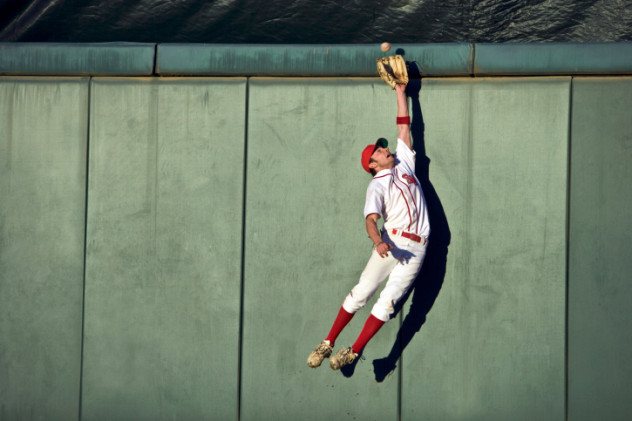
By the 1950s, baseball was a stale game. There had been no new franchises since the MLB’s formation, and the Yankees won every single year. Also, when the Brooklyn Dodgers moved to Los Angeles they discovered that people west of the Mississippi liked baseball, too, but they simply had no other teams in that half of the country. This state of affairs prompted Branch Rickey, the guy who signed Jackie Robinson, to orchestrate his Continental League (CL) “scheme.”
In 1960, the CL publicly announced its plans to add new franchises in major cities currently without baseball teams, such as Houston. No one knows if Rickey was serious about the Continental League or if he simply wanted to force MLB’s hand to expand. Either way, his plan worked and the mere threat of a new major league caused Major League Baseball to immediately expand into Minnesota, Houston, and Washington, D.C. All of these cities were chosen since they would have been the homes of Continental League teams. Over the next 15 years, the MLB added teams in Seattle, Toronto, Kansas City, Montreal, and San Diego, and threw in the New York Mets for good measure. Without a single pitch being thrown, the Continental League shoved baseball into the modern era.
6United States Football League
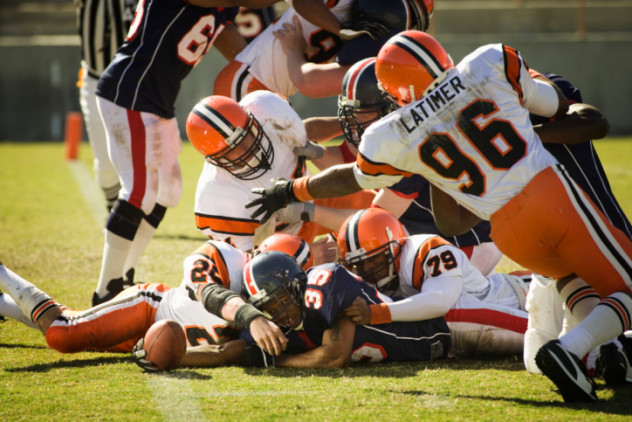
Donald Trump has been the part of many failures over the years—often marriage-related—and his forays into sports have been no different. In the mid-1980s, Donald Trump, then a legendary real estate tycoon, decided he had had enough of the National Football League. He teamed with David Dixon, the guy who built the Superdome, to create the United States Football League (USFL) in 1983.
Dixon had a conservative plan, which called for moderate spending, a spring schedule, and slow expansion into NFL markets, to allow for the USFL to successfully compete. The Dixon Plan was moderately successful over the league’s first two seasons as the USFL signed three straight Heisman Trophy winners, including Herschel Walker, and began to generate interest from major networks for a network television deal.
The deal with Herschel Walker, valued at $5 million over three seasons, foreshadowed the USFL’s demise, as it greatly exceeded the $1.8 million salary cap established for each team by Dixon. Once the Walker deal was allowed, other teams began signing exorbitant contracts, some to future Hall of Famers like Steve Young and Jim Kelly. These deals gave the league credibility but made it financially unstable.
But the league could have perhaps survived if “The Donald” had not convinced the other owners to switch the USFL to a fall schedule in 1985 to compete directly with the NFL. The results were disastrous, and the league decided to stake its future on filing an antitrust lawsuit against the NFL. Shockingly, the USFL won the lawsuit, but were awarded only three dollars in compensation. The jury found the NFL was an illegal monopoly, but that the USFL had failed based on its own poor management, so they did not deserve any compensation. Almost immediately after this, the USFL folded in disgrace.
But the dispirited league left behind the legacy of the two-point conversion, instant replay reviews, and a salary cap, all of which the NFL adopted within a decade.
5American Basketball League

The American Basketball League (ABL) was founded when Abe Saperstein, the owner of the Harlem Globetrotters, was spurned for the new Los Angeles NBA franchise in 1960. Naturally, as revenge, he decided to create his own league, because that’s how rich tycoons settle grudges. To enact his plan, Abe enlisted the help of a relatively unknown young man named George Steinbrenner, who would lose boatloads of money in this venture before finding success with the New York Yankees.
The ABL was doomed for failure from the start since many of the players were amateurs, washed-up stars, or players previously banned from the NBA. To worsen matters, the owners clearly did not know how to run professional teams. Such was the chaos that Steinbrenner, owner of the Cleveland Pipers, sold player Grady McCollum’s contract at halftime. These wild moves caused Steinbrenner to personally lose over $2 million and taught him well for his future sporting ventures.
However, the ABL was instrumental in introducing two new innovations to the game of basketball. They added a three-point line and a wider free throw lane to curb the dominance of big men like Wilt Chamberlain. In time, both of these changes were implemented in the NBA, providing for a more energetic and high-scoring game.
4World Hockey Association

Surprisingly, the National Hockey League was made up entirely of North American players before the late 1970s. That all changed after the upstart World Hockey Association (WHA) attempted to, and failed to, compete with the NHL. As with many upstart leagues, the WHA signed its players to lucrative contracts which forced NHL owners to pay their players more. The WHA’s higher salaries had a major impact on the NHL since, until then, NHL players had been by far the worst paid of the Big Four leagues.
These high contracts eventually caused the WHA to fold in 1979, but it allowed the WHA to achieve playing parity with the NHL. The WHA won the majority of interleague exhibition games during its existence.
Most importantly, though, the WHA decided its best bet was to sign players from Europe. Until then, Europe had been a surprisingly overlooked market considering how dominant European teams were in the Olympics. This flood of foreign talent forced the NHL to do likewise, and changed the game into a more fast-paced and high-scoring affair, more like European hockey.
Wayne Gretzky started as an unknown player in the WHA before becoming “The Great One,” and five modern teams (among them the Edmonton Oilers, who became an NHL dynasty in the 1980s) originated in the WHA. Hollywood is even indebted to the WHA, as the Hanson brothers from Slapshot are based on the Carlson brothers who played for the WHA’s Minnesota Fighting Saints.
3North American Soccer League

Before the North American Soccer League (NASL) began in 1968, soccer was a mostly unknown and, at times, reviled sport to many Americans. The game’s mechanics, such as a clock which counted up, and a plethora of draws, made no sense to traditional American viewers. However, the English victory in the 1966 World Cup captivated English-speaking viewers around the world and gave the NASL the boost it needed to slowly bring soccer to America.
By 1973, the NASL was popular enough for the Philadelphia Atoms to appear on the cover of Sports Illustrated, the first time soccer had been profiled by a major American sports publication.
Then, in 1975, the New York Cosmos signed Pele—arguably the greatest soccer player ever—and American soccer exploded. Soon, the Cosmos were regularly drawing crowds of 50,000 people and Pele was a media sensation. Pele was the sort of famous where his mere presence caused Nigeria to pause its civil war for 48 hours when he visited.
Such a star attraction caused CBS to pick up the Soccer Bowl (the NASL championship), and other networks began broadcasting regular season NASL games. Other NASL teams also signed aging European stars such as Franz Beckenbauer and Johan Cruyff to create a truly cosmopolitan league.
Pele’s popularity during three seasons with the Cosmos created a youth soccer boom, which catapulted soccer to the top of many youth sports statistics. The ensuing popularity led FIFA to award the US the 1994 World Cup. Of course, the NASL was still unable to make soccer a fully profitable league, and the high salaries to European players, along with the 1980 economic downturn in the US, led to its demise in 1983.
However, the lessons learned from the NASL were remembered by those in Major League Soccer (MLS), which began in 1994 and still operates today. The MLS imposed a strict salary cap, while still maintaining a high level of play and luring in past-their-prime-but-still-famous European players. Thanks to the NASL, soccer finally “made it” (kind of) in America.
2National Basketball League
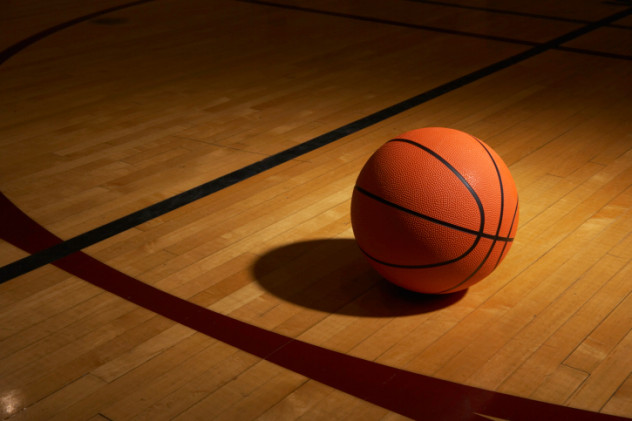
The modern day National Basketball Association (NBA) was formed in 1949 when the Basketball Association of America merged with the National Basketball League (NBL). Yet, in 1996, the NBA celebrated its 50-year anniversary, which marked the 50th anniversary of the BAA, completely ignoring the NBL’s contribution to modern-day basketball.
This historical disregard for the NBL is unfathomable since the NBL was the league which first welcomed African Americans into the basketball world. The NBL also was where George Mikan, whose athletic prowess and star power practically saved the NBA in its unstable early years, began his career. Mikan’s scoring dominance eradicated the dead ball era of basketball, where scores were routinely in the 20s and 30s.
The Fort Wayne Zollner Pistons (which became the Detroit Pistons), a stand-out NBL team, were owned by Fred Zollner, an automobile magnate, whose money was integral to the NBA in its infancy. Additionally, five current NBA franchises—the Detroit Pistons, Denver Nuggets, Los Angeles Lakers, Sacramento Kings, and Philadelphia 76ers—can trace their lineage to the NBL. Without the NBL, there might not be Christmas Day basketball.
1American Basketball Association

Plain and simple, the American Basketball Association (ABA) is one of mankind’s greatest creations, and certainly the only truly successful upstart major league. There was an ABA coach named Slick and a star player named “Bad News.” They played with a red and white ball, the Indiana Pacers even used a wrestling bear as a halftime show, and a franchise called the Memphis Tams offered all their players $300 to grow a mustache. All those novelties, combined with frequent financial chaos, created the most colorful sports league in history.
The ABA, founded in 1967, brought NBA basketball out of the doldrums and into the modern era by redefining how basketball was played. Like the ABL, the ABA instituted a three-point line which dramatically increased scoring by forcing defenses to defend the perimeter. This, in turn, created more space for drives and dunks. Given how obsessed modern basketball is with dunking, its shocking to know that dunks were not a major part of the game until the ABA’s flashy playing style began. The ABA capitalized on the popularity of dunks with a yearly slam dunk contest.
Furthermore, the ABA revolutionized the financial structure of basketball by allowing free agency, eliminating the reserve clauses which tied players down, and recruiting players directly out of high school. This allowed the ABA to grab talent before the NBA, and gave them a competitive balance most upstart leagues never achieved.
The list of NBA legends who began their career in the ABA is simply ridiculous: David Thompson, George “Ice Man” Gervin, Connie Hawkins, Spencer Haywood, Artis Gilmore, Jerry Lucas, Moses Malone, Dan Issel, and the human highlight reel—Julius (Dr. J) Erving. Future NBA coach Larry Brown also began his career coaching the ABA’s Denver Nuggets.
Yet, for all its flashiness and innovation, the ABA still failed because it was poorly managed, and put franchises in places like Pittsburgh and Baltimore. In 1976, amid dwindling revenue and only nine remaining teams, (most of) the ABA merged with the NBA in 1976. From the ABA came the Indiana Pacers, Denver Nuggets, San Antonio Spurs, and the New York Nets, along with an influx of talent which resurrected the NBA from declining attendance and TV sponsorships in the early 1970s.
Geoffrey earned seven worthless liberal arts degrees before deciding to become a comedian. Follow his missteps on Twitter @filthyson.





